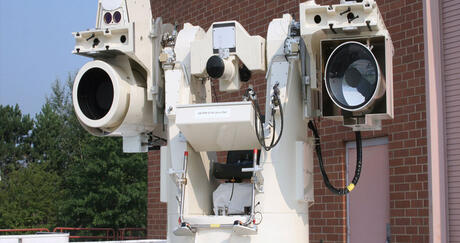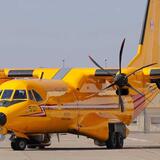NASA’s SLS is the rocket designed for deep-space exploration and human travel beyond Earth’s orbit. Its first flight is slated to launch in 2022 from the Kennedy Space Center in Cape Canaveral, Florida, where L3Harris’ Kineto Tracking Mounts (KTM) will provide video support for the launch.
The KTM system is equipped with a complement of electro-optical sensors to facilitate its role as a highly reliable, low-maintenance tracking/photography instrument. L3Harris’ KTMs consistently meet the rigorous challenges of the test range and launch environment. The KTMs are durable, reliable systems that integrate precision optics with smooth, accurate positioning systems along with the integration of the latest target sensing and data recording techniques to aid in tracking the launch, providing time, space and position information.
NASA will also use the WESCAM MX™-15 electro-optical infrared sensor imaging system as a tracking asset. The WESCAM MX™-series, manufactured in Canada, includes multi-sensor, multi-spectral systems deployed worldwide, at varying ranges and with overlapping fields-of-view, creating the opportunity for stable high-resolution multispectral imagery making it ideal for tracking the boosters from launch to jettison.
It has been nearly a half-century since the last lunar landing mission in 1972, Apollo 17, launched on Saturn V, the final rocket to take humans beyond Low-Earth Orbit. A testament to our progress, today’s SLS has 15 percent more thrust than Saturn V and is NASA’s exploration class rocket that will go farther, faster and carry heavier payloads than its predecessor. It is the key component of NASA’s Artemis human spaceflight program.
Artemis astronauts will visit the Moon's South Pole, including the first woman to visit the lunar surface. The Artemis mission will be the most diverse and equitable lunar mission ever undertaken. It will include a coalition of partnerships with industry, nations and academia that will help us get back to the Moon quickly and sustainably.
Artemis I is the first flight for SLS and the Orion spacecraft and will be the uncrewed test flight that travels to the Moon and returns the roughly 235,000 miles to Earth. The flight will demonstrate the performance of SLS and ensure Orion’s ability to reenter the Earth’s atmosphere. For Artemis I, L3Harris avionics are key flight components of the booster and core stage and were designed and manufactured in Mason, Ohio.
“Our shared passions with the NASA, SLS and Artemis Program teams push us to innovate and drive us to provide space flight avionics that are enabling these missions today and in the future,” said Kristin Houston, President, Electro Optical, L3Harris.
Artemis II will be the first manned SLS flight to the Moon, though it will only be placed into a lunar orbit. L3Harris is supplying the mission’s critical audio interface, speaker and control unit, in addition to the booster and core stage avionics and tracking assets. The audio control unit acts as the brain of the system and the speaker unit provides the audio. The Orion audio system was designed and in built-in Palm Bay, Florida. Subsequent Artemis Missions II and III, scheduled for 2024 and 2025 respectively, will be crewed for lunar landing.
As the Artemis missions take humans to new destinations and lead the way to new scientific discoveries, L3Harris will be there with exciting exploration technologies to help each step further into space. L3Harris is committed to the future of space exploration and travel. Our teams are dedicated to engineering, designing and manufacturing the critical technologies that will drive humankind to push boundaries and expand scientific knowledge of the universe.
Numerous NASA programs have relied on L3Harris’ expertise and technology – from early spacecraft through the Mercury, Gemini, Apollo, Space Shuttle, International Space Station and previous Mars missions. L3Harris has also supported deep space exploration with work on the Hubble Space Telescope and now the James Webb and Nancy Grace Roman space telescopes. In addition, the company supports space-based weather forecasting on U.S. and international satellites and has navigation technology on every U.S. GPS satellite. When navigating the new space era, L3Harris anticipates customers’ demands and delivers innovative solutions – quickly and flawlessly.
If you want to shape the future of space exploration while working with talented and empowered engineers, manufacturing professionals and creative individuals who shape the art of the possible – check out our Careers page.













